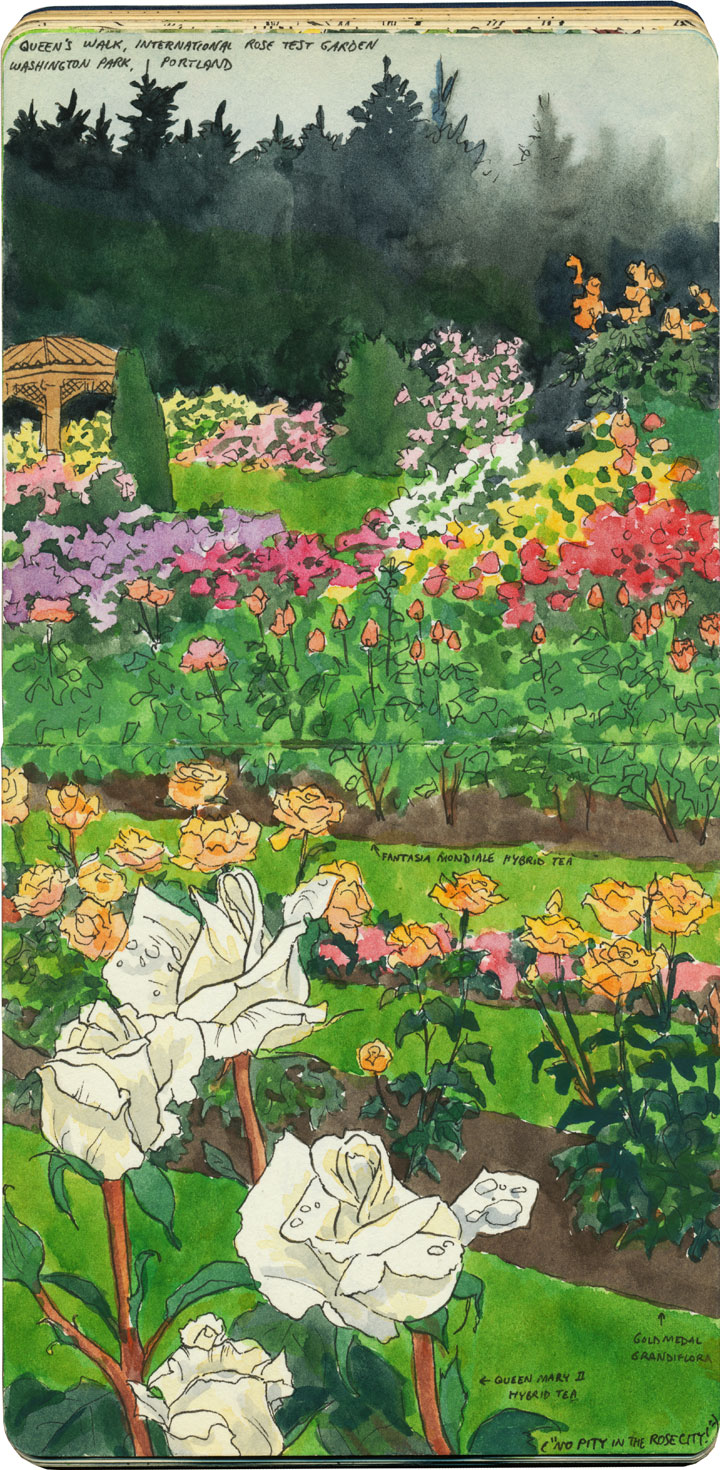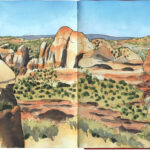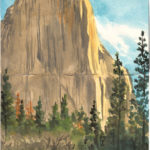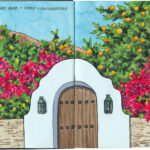Drawing super-complex things like rose gardens always breaks my brain a little. I start out with good intentions, attracted by the detail in every petal and the stunning colors of all the rose varieties. But every time I look down at my page and back up again, I lose track of where I was. Then I kind of throw up my hands, and suddenly everything becomes a mess of color blotches. But that’s okay—because when I go and look at the sketch later, my memory of actually standing among all those real roses is crystal clear.
Coming up rosesPortland, OR
Posted 10 years ago

 Twists and turns
Twists and turns  Summer of Solitude
Summer of Solitude  Home and away
Home and away 
I think its lovely!
I absolutely love these – gorgeous! Do you have any tips for someone trying to learn how to sketch in a similar way? Every time I try watercolours, the colours just get out of control.
Hi, Georgia—thank you! I thought about just replying via email, but then it occurred to me that other folks might be interested in this conversation, too. I know there are some fellow sketchers who read this blog, so folks, feel free to weigh in here if you have any advice to share with Georgia!
Watercolor is tricky, and one of those things that takes a lot of practice, so above all, have patience with yourself. Keep experimenting, and you’ll get the hang of it. What I love about watercolor is that there are a lot of different possibilities in terms of technique and style, so part of that practice is figuring out what you like (and don’t like), and what works for you. Here are a few tips I can think of, though, to help get you started:
– If you’re just starting out, I’d recommend cake watercolors (also called half-pans), rather than tubes. They’re a little easier to wrangle, especially on the go. Actually, I’ve been working with watercolor forever, and I still prefer cakes to tubes.
– You can also make your own cakes by buying tube watercolors, and filling empty half-pans with the paint. The paint dries in the pans and you can reactivate it with water. That’s what I do for my travel set.
– For your own sanity, I would not recommend painting in Moleskine sketchbooks, like I do … at least until you’ve had some practice. They’re really terrible with watercolor, and if you’re not used to the medium, you’ll end up fighting it all the time. I’d recommend using actual watercolor paper, at least while you’re learning. Some sketchbooks nowadays come with watercolor paper in them; I also know people who just buy a pad or a block of watercolor paper and sketch directly onto that.
– Try different brush sizes. I mostly use just a squirrel mop when I travel, but in my studio I use lots of types of watercolor brushes, and you may find you like some types better than others. I like natural-hair ones the best. Squirrel and sable are my favorites.
– Take care of your brushes. Keep them in some sort of rigid holder to keep the points/tips/hairs intact. Don’t leave them sitting in water—you can damage the hair and make the ferrule (metal bit) separate from the hairs and wooden handle. When your brush starts to wear out, don’t be afraid to replace it with a new one. I like to relegate my “old” brushes to other, less precise tasks.
There are lots of different watercolor techniques, but two of the most common (and the two you’ll probably end up using the most) are: glazing and wet-on-wet.
– With glazing, you build up color in layers. Paint a layer, wait for it to dry completely (the waiting is crucial!), and then paint another layer, and so on. You can build up really rich colors that way. The spots of color tend to have hard edges with glazing, but that can be very beautiful. Sometimes I’ll do a painting by glazing alone, so there are no areas where colors bleed into one another.
– Wet-on-wet is exactly how it sounds. You paint an area, and then add more or different pigments to it while the last layer is still wet. You get lots of interesting color bleeds this way, and can do beautiful things with gradients and subtle color shifts. This method is very unpredictable, though, so it takes both practice and patience.
— Most of the time, I work with both of these techniques, and others besides, in the same drawing. Other techniques include scumbling, washes, blotting, resists, etc. You might try loading tons of wet pigment into a small paint area, so that when the “puddle” dries, the color distributes unevenly. You can even sprinkle salt on wet watercolor to lift the pigment out wherever a salt crystal meets the paper. Try lots of things!
Finally, it’s good to look at a lot of watercolor examples as you practice. My “style” might be similar to some people, and very different from others. I’d recommend looking up one of the Urban Sketcher websites—those usually have lots of people posting their sketches in one place. Since everyone draws and paints differently, you’ll get snapshots of lots of different styles and techniques.
Hope this helps—happy painting!
Thank you so much! I wasn’t expecting such a wonderfully detailed reply, I was really pleasantly surprised to see this. I’m going to the coast soon and I can’t wait to try documenting my trip like this (it will be great practise, if nothing else).